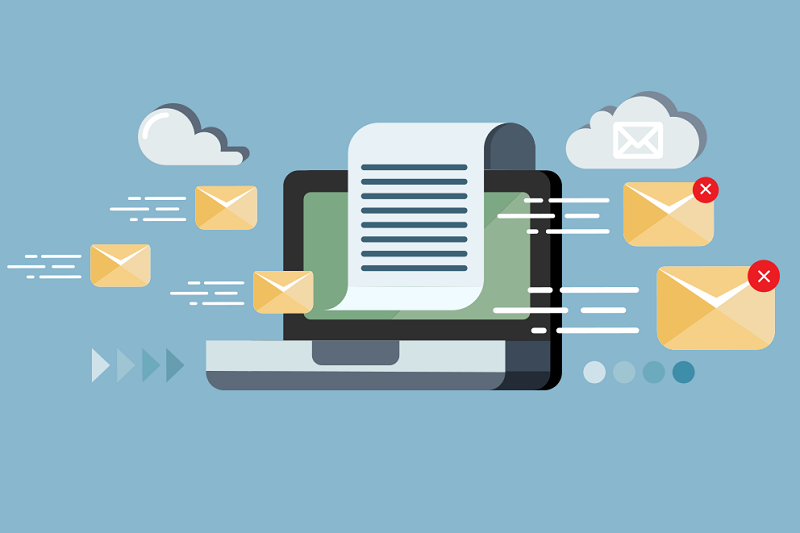
WHY AND HOW TO SCRUB AN EMAIL LIST?
If you’ve never scrubbed your email list, you’re likely sending emails to people who will never open them.
That means your call-to-actions aren’t being clicked and you’re wasting your time, effort, and dollars on people who are no longer interested in your email/business.
In fact, your email lists will decline by around 22 percent per year. So, something needs to be done to make sure your sending emails to people who actually want to receive them.
That’s why you need to improve your email hygiene and do some email scrubbing.
What Does Email Scrubbing Mean?
Simplified, scrubbing your email list means to remove people who are never going to see, interact, or open your emails.
While scrubbing will reduce the size of your list, it will also improve the list’s overall success. A classic “less is more” scenario!
By removing unengaged subscribers, you’re marketing to only those who interact with your campaigns.
Keeping your lists hygienic (by scrubbing them—get it?) should be an integral part of your email marketing. We recommend you scrub your lists at least a few times per year.
Email Scrubbing: Warning Signs
If you’re supposed to scrub your email lists a few times per year, when do you know when it’s time to do so?
The first sign should be in your usual email marketing metrics (open rates, click-through rate, bounces).
Take a look at them and look for declining patterns, something that might look something like this:

If you do notice those patterns, it’s time to scrub your email lists.
Next, we advise digging into your deep statistics and individual campaigns to look at unsubscribe and spam complaint rates.
If you notice that more subscribers than usual are unsubscribing/reporting your emails as spam, you should scrub your list immediately.
To recap, if you’re noticing declining numbers in open and click-through rates and/or rising numbers in unsubscribes or spam complaints, it’s time to scrub your lists.
Benefits of Email Scrubbing
As you can imagine, if you’re looking for the warning signs to begin an email scrub, the warning metrics will improve—but that’s not all.
Here are some of the benefits to email scrubbing:
Fewer Spam Complaints
Spam complaints happen, whether you’re actually spamming or not.
Some subscribers mark emails as spam for a variety of reasons—for instance, they may not even remember signing up.
If Email Service Providers (ESPs) receive too many spam complaints from a particular domain, they’ll start to send those emails directly to spam folders, or they’ll blacklist the domain altogether.
The ESPs will do that for all your emails, not just the subscribers who originally filed the complaint.
Scrubbing your list will reduce the number of spam complaints and will increase your sender reputation.
Better Open and Click-Through Rates
This one makes the most sense. If you’re scrubbing the emails that no longer engage with your campaigns, your list will have higher open rates and subsequently higher click-through rates.
Even if they’re the same people who were opening your emails before the scrub, they’ll be a larger percentage of the whole.
Reduce Email Marketing Cost
Cleaning your email lists will improve the dollar per email metric because you’re sending high-quality emails to high-quality subscribers.
Most Email Marketing Services (EMS), like MailChimp, charge by the number of emails you send and/or the number of subscribers that you have.
Cutting the rotten meat, so to speak, of your lists will mean that your email marketing costs will be lower, but you’ll have a higher Return On Investment (ROI).
Fewer Bounces
Occasionally emails will bounce, which means, for one reason or another, they never reached their intended customer.

What you might not know is that too many bounces will sometimes have the same effect as spam complaints—hurting your reputation.
Removing the bounced addresses will cause the bounce rates to reduce and the deliverability of your list to improve.
To read more about email bounces, please click here.
What to Do Before You Clean Your Email List
Before we get to how to scrub your email list, there are some other things you should do beforehand.
First, you should find out why your emails are bouncing. If you read our reasons why your emails bounce article, you know that there are more than just a few reasons why right?
It will behoove you to find out whether or not your emails are soft or hard bouncing.
If your list is comprehensive enough, and you figure out that a bounce is happening due to a spelling error or something like that, you can use a data appending technique to fix it.
Also, implementing two-factor authentication for your subscribers will benefit your list greatly.
If you can fix the bounce, it’s always better to do that than removing the address altogether.
Another thing you should do before cleaning your list is to try and re-engage your subscribers.
Perhaps they’ve just gotten bored of your campaigns and something fresh and specifically tailored to them will get them right back into the game.
Do your research, segment, and push. Keep those who respond, and scrub the rest.

How To Scrub Your List
Each email provider, like MailChimp, will have different options, but services like ours can automatically unsubscribe emails that bounce from inactive domains.
Next is to take all of your inactive subscribers and simply delete them from your list.
An Email Verification service helps you so much with this as they’ll typically include services like email validation, typos in addresses, etc.
Keeping on top of your lists and making sure they’re clean will improve your email marketing campaigns and metrics and will make you a very happy marketer.
